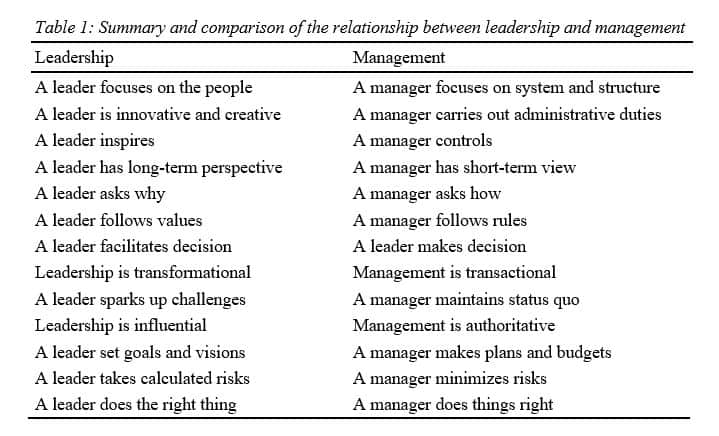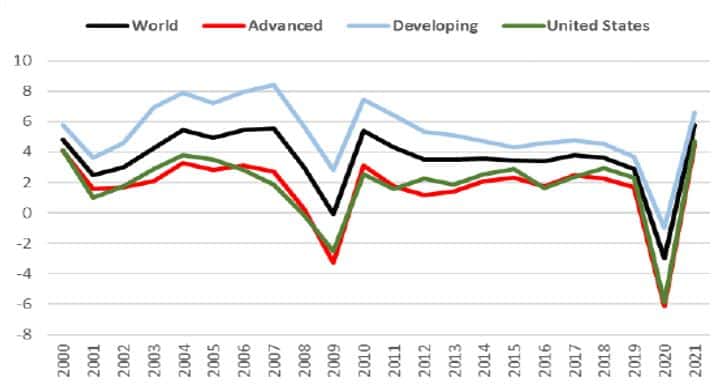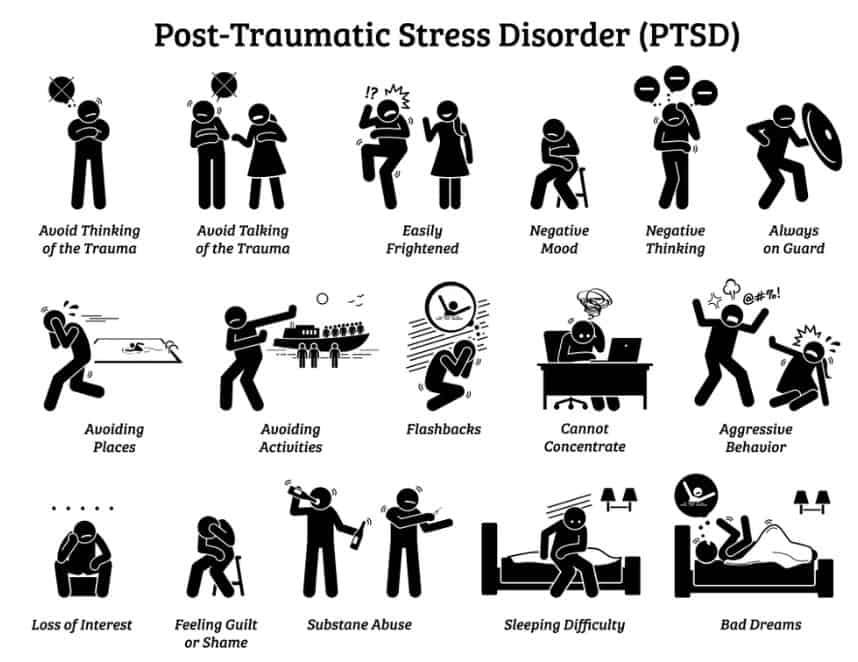Leadership Dissertation Topics
Leadership Dissertation Topics – Leadership is one of the vital functions of management which aids to accomplish organizational aims and objectives by maximizing the efficiency. A leader plays a significant role in concern’s working and encourages employees with both non-economic and economic compensation.
A leader not just supervises but rather carries a considerable mentoring role for subordinates by instructing them the way they are meant to perform. A project manager plays a role of primary leader who is responsible to manage project goals related to scope, cost, time and other operations effectively.
Scholars have for many years tried to differentiate and give the similarities between leadership and management. Leadership and management are two words that are intertwined together. Leadership defines a possessive quality that has to do with influencing, motivating and working toward set goals. Management on the other hand, is the desire to follow set rules in order to achieve set goals. Our collection of Leadership Dissertation Topics will help you better understanding of leadership theory.
Management involves giving order in contrast to leadership. The relationship between leadership and management is a basic problem in the theory and practice of organization management. Leadership and management are two basic functions of organization management.
The nature of the relationship between the two is the relationship between the leadership function and the management function. In general, leadership has been defined as doing the right thing while management is seen as doing the things right. This paper assesses the relationship between leadership and management, identifying the similarities, difference and the problems associated with identifying the actual relationship between leadership and management.
Keywords: Leadership, Management, Organization Management, Organization Function, Leadership Dissertation Topics.
Introduction
Abraham Zalezmek first described leadership and management as two separate terms in publication in 1977 [1]. In literature, leaders are seen to possess skills that are termed visionary and being right. Management on the other hand, is termed task-orienting and doing things right. While many authors try to find the difference between leadership and management, few are of the opinion that both leadership and management are the same [2]. Leadership is often described as the feature or quality that differentiates a great manager from a good one.
The terms leadership and management make up the skills and abilities necessary to describe an individual’s hunger for team success. This goes further to say that leadership and management can be interchanged especially when explaining their performance in organizations. According to [3], leading describes who you are as a person whereas managing is skill-based, a craft that can be learned and describes what you can do. This suggests that leadership is an identity that can be cultivated within a person and management, a set of characteristics that are demonstrated to show competency.
However, the description of leadership as the development of personal goals and management as the mastery of a craft is misleading and oversimplifies human and organizational development. In businesses, effective leadership is seen as the most essential part through which the business sustains itself in the face of challenges caused by rapid growth of the economy [4]. As a means to validate this, be sure to visit our leadership dissertation topics for material that will help you with your studies.
Leaders take charge and control the operations of an organization. Good leaders set achievable goals and objectives and guide the course towards the realization of the goals through effective strategies [5]. In addition, good leaders have the ability to influence their employees and encourage them through a positive organization culture and generous employee benefits such as leave allowances, healthcare insurances and others.
Leadership focuses on the general influences for inspiring people and gain their trust. On the other hand, management deals with planning, organizing, problem solving, influencing and controlling. In organizations, when performances appear to be bad, managers tend to understand the key reasons and what effective measures to take to mitigate the problems but would always wait for the leaders to come forward [6]. This reflects the division between leadership and management in organizational practice.
This division causes a misunderstanding between leadership and management. Leadership is process-oriented in the same way as management and both are similar in several ways. In one way, managers lead and leaders manage people and both of the work with people to achieve goals. This paper is one of many leadership dissertation topics available on our website that presents the relationship between leadership and management and the impact of this relationship in business.
Firstly, the leadership and management are discussed separately. Secondly, the functions and impacts of leadership and management further elaborated. Furthermore, the different aspects of leadership and management are discussed highlighting their roles in the growth of organizations and lastly, the relationship between leadership is discussed.
Leadership
Leadership refers to the process of influencing other people to do their duties with confidence and out of their own will. Leadership is focused on achieving specific goals through people by motivating them to direct their energies toward attaining the set goals. A leader equips, trains and influences followers with diverse abilities and skills to focus their energies willingly and enthusiastically to achieve organizational mission and objectives [7].
The concept of leadership does not only talk about the willingness of the followers but also their zeal and confidence [8]. The term leadership has been widely discussed in many literatures and many scholars have defined it differently each explaining it in his own way. Currently, there are more than 400 definitions of leadership [9]. Leaders influence people positively and make them strive out of their own will to achieve the organizational goals.
Be sure to visit our leadership dissertation topics. The role of a leader in an organization is vital in terms of creating a vision, mission, objectives, policies and strategies that help to achieve organizational goals effectively and efficiently as well as directing and coordinating the organizational activities [10]. The lack of effective leadership may cause problems related to unethical practices, high labor turnover, and poor financial performance among others in an organization. The main aim of many businesses is to achieve their set goals thus, the need for effective coordinate and motivate employees [11].
Leadership Qualities and Roles
Leaders play very important roles in the growth of organizations. The qualities of leaders help them to identify realizable goals, devise strategies to reach those goals, and motivate and provide direction for the team to follow to achieve the set goals. It is vital for the leader to recognize the value system that operates in a variety of work group and situation.
- Objective: A good leader always examines all situation before making decisions. Objectivity is ability to rationally assess problems and issues without being biased.
- Perception: Perception entails the ability discover the realities in one’s surroundings. Organizational leaders are required to have knowledge of the organizational goals and objectives and work towards achieving them.
- Establish and follow priorities: This is the ability to recognize what is important and what is not and arrange goals in the order of their importance. Leaders should know what is important and worthy of consideration
- Interpersonal relationship: All leaders work with people. A leader should have good human relation attitude. This is very important for leaders who have their jobs done through subordinates. The human relations theory states that jobs should be designed and scheduled in such a way that workers have a sense of responsibility as well as opportunities to participate in decisions affecting their job [8].
- Manages crisis: In all organizations, disputes always exists among the workers. Leader should be capable of settling disputes or differences among their subordinates.
- Decision-making: Decision-making is one of the most important roles of leaders. Effective decision-making involves defensive avoidance, collecting more and more information about the cost and utility of each alternative and comparing them systematically in order to choose the most effective costs.
Management
As defined by Katz in 1955, management is exercising direction of an organization through executive, administrative and supervisory positions [12]. In the above definition, management is seen as a task-oriented responsibility and involving the development of staff, mentoring high potential personnel and resolving conflicts at the same time reserving ethics and discipline [12].
Management was defined by Kotter as the job of taking care of planning, organizing, budgeting, coordinating and monitoring activities for a group or organization [13]. In general, management is the process or means of achieving organizational goals. In Northouse definition, management is the means through which objectives and goals are realized through the efficient use of resources [14].
The most important resource managed by managers is the human resource. The aim of managers is to reach short-term goals, avoid risks and establish standards to improve standards [15]. While carrying out their activities, managers focus on directing and controlling their assistants, resources, structures and the entire system.
Functions of Management
The functions of management include planning, organizing, influencing and controlling. Managers must perform these functions to enable them perform their duties effectively.
Planning
Planning is the first aspect of management. Planning helps to choose the most appropriate method for performing important task to help achieve organizational goals. The sole focus of planning is achieving objectives. The activities of the organizational team, managers or employers toward achieving desired objectives and achieve success are defined through planning. In general, planning increases the efficiency of organizations because it leads to short-term success and in the long-run shapes the organization’s long-term future [16].
Organizing
Organizing involves assigning task to people that was done during planning. Organizing helps creating a process that converts plans into incidents or products [17]. In general, the organizational employees are assigned some tasks, which meet or contribute towards achieving important organizational goals.
Tasks need to be organized, in such a way that every employee’s performance should add to the departmental and organizational success. Divided labor reduces workload and optimizes the utilization of resources; therefore organizations need to manage their people and processes [16].
Influencing
Influencing is also seen as motivating, directing or leading. It means guiding the organization members to accomplish tasks in a way that helps an organization achieve its goals [16]. Influencing has a major purpose, which is enhancing productivity.
Generally, the accomplishment of tasks, which are labor-intensive and require teamwork and result in generating high production levels in the long-run rather than the situations, in which people have to accomplish individual tasks because most of the people find task-based working conditions as uncomfortable or tedious[17].
Controlling
According to [16], controlling is the fourth managerial function, and it plays the following roles:
- Information collection for performance evaluation.
- Deciding the performance norms and compare the current performance with the previous performances.
- Make a new action plan, and modify the existing plans to achieve the desired objectives.
Controlling is a continuous function of managers [16]. Controlling assures that the targets are achieved, and the desired changes have been made. The functions given above are major management functions; however, they need to be performed simultaneously in order to run the organization in a profitable way.
Relationship between Leadership and Management
In Jarad’s view, leadership exists as a subset of management and both leadership and management are important to facilitate organizational performance [20]. Management deals with planning, budgeting, controlling, and structuring while leadership refers to a process of directing, visioning, and motivating including coordinating and the development of individuals.
Additionally, management and leadership roles are distinctive in terms of internal and external roles [21]. According to [22] the goals of managers come from necessities whereas the goals of leaders come from a place of active attitudes. This means that leaders inspire people to be creative and innovative about problem solving under less supervision. On the other hand, managers give instructions to ensure that the organization’s day-to-day business is completed.
The creativity of leaders can sometimes be suppressed by managers’ desire for order, and while managers avoid risks, leaders take calculated risk [22]. In addition, a leader has soul, the passion and the creativity while a manager has the mind, the rational and the persistence [23]. A leader is flexible, innovative, inspiring, courageous and independent whereas, a manager is consulting, analytical, deliberate, and authoritative and stabilizing [24].
Furthermore, management works to establish security and order, as leadership promotes change and fluidity within organizations. In as much as individual can be a great leader, a great manager, or both, he still needs the mastery of slightly different skills and competencies. The mastery these skills helps the individual to successfully navigate the fields of both management and leadership. There is no doubt our collection of leadership dissertation topics will help you in this field.
Leadership and management may overlap, but they are not the same [26]. Leadership is a multi-directional influence relation, while management is a unidirectional authority relationship [25]. Zaleznik argues that organizations need both effective managers and effective leaders in order to reach its goals, even though managers and leaders have different contributions [1].
He further stated that leaders promote change, new approaches, and work to understand people’s beliefs to gain their commitment, but managers promote stability, exercise authority, and work to get things accomplished. Consequentially, leadership and management need different types of people [1]. Watson in 1983 stated that management means taking care of structure and system, but leadership focuses on the communication, motivation, and shared goals [27].
To further state the difference between leaders and managers, Watson mentioned in his book “Leadership, Management and the Seven Keys” that strategy, structure, systems, shared values, skills, and style (the 7S) are more effective for leaders than for managers.
Leaders have vision, goals, strong values and work to ensure that his followers are on the same page [28]. Hull and Ozeroff described leaders as good communicators because they spend more time with their followers [28]. In addition, leaders are aware of their team members’ professional strengths, weaknesses, emotional standings, their place in the organization, which allow them to know how to motivate them [26].
Understanding the nature of leadership requires you to consider the broader notions of leadership and management. Leaders have followers, and must influence their followers in the right ways [25]. Managers on the other hand, follow the laid down process, and seek stability and control and in a way, instinctively try to resolve problems quickly. Organizations need both managers and leaders to achieve the goals and objectives. Table 1 gives the summary and comparison between leadership and management.
Table 1: Summary and comparison of the relationship between leadership and management

Problems associated with Understanding the Relationship between Leadership and Management. Leadership Dissertation Topics
- Understanding correctly the notion of leadership and management: Many scholars have defined leadership and managements in more than 350 different ways [18]. These definitions bring about inconsistency in understanding the concept of leadership and management.
- The inequivalent relationship between leadership and management, and leaders and managers: According Warren Bennis, a manager is someone who does things correctly and a leader is a person who does the correct thing [19]. The evaluation of the definition by Bennis, the leadership and management behaviors cannot exist in the same person. It goes further to say that leaders mainly perform the leadership function of a certain level in the organization, but the management function of this level cannot be ignored, otherwise leadership function will be ineffective.Conversely, managers can mainly perform the management function of a certain level in the organization, but the leadership function of this level cannot be ignored, otherwise it will lead to inefficient or ineffective management functions [20].
- Understanding the nature of the relationship between leadership and management: The function of leadership mainly concerns the right direction and the value of organizational activities, whereas the function of management deals with stability of order and efficiency of organizational activities [20]. Leadership and management functions in different levels in an organization and together constitute management system and management system of the whole organization management. Consequently, the nature of the relationship between leadership and management is the relationship between leadership function and management function. Therefore, the description of leadership and management by Warren Bennis should be the mission of the leadership function is to ensure doing something correct, and the mission of the management function is to ensure doing something correctly [20].
- Understanding the relationship between leadership and management to be different from the relationship between their disciplines: The relationship between leadership and management disciplines is based on the need of discipline construction, and they both have different emphasis. Nonetheless, this emphasis should not deny the unity of the organization management. The means that the discipline itself is independent, but its independence is relatively independent in the theoretical system of the organization management [20]. The two disciplines have strong complementary both in theory and in practice.
- Understanding that the need of theoretical research cannot cover the need of the practice of organization management: Several scholars see leadership as one functions of management. This is from the viewpoint that management functions include planning, organizing, leading and controlling. Other scholars are of the viewpoint that management belongs to the leadership, because leaders’ function is more prominent in the organization management. These viewpoints distort the relationship between leadership. However, the relationship between leadership and management should be analyzed according to the natural state of the organization management practice.
Conclusion and Leadership Dissertation Topics Toughts
Logically, the concepts of leadership and management are different but have some similarities. An attempt to break the relationship between leadership and management by considering only the differences that exists between them cancels the meaning of organization management. This project can be found in our leadership dissertation topics section and we have highlighted that both leadership and management are important for every business or organization to achieve success.
Practically, once leadership or management breaks away from the organization management, its mission, the whole organization management becomes meaningless, and the whole organization management system will operate in a low level. If this happens, it will eventually lead to inefficient integration of the organization resources and poor organization performance.
Having discussed the relationship between leadership and management under the concept of organization management. It is believed that the nature of the relationship between leadership and management is the relationship between leadership and management functions. This research can help to address the problem that leadership and management face especially in their combined contribution to organization goals and business growth. In practice, leadership and management are interrelated and therefore go hand in hand in organization management.
References
- A. Zaleznik. Manager and leaders: are they different? Harvard Business Review, 1977, vol. 55, pp. 67-78.
- A. Neelam, PhD, H. A. Glenn Jr, PharmD, B. Amie, PharmD, G. Oscar, PhD, MBA, C. O’Neil, PharmD, S. M. Misty, PharmD, S. L. Jenelle, PharmD. Leadership and Management Are One and the Same. American Journal of Pharmaceutical Education, 2017, vol. 81, no. 6 Article 102.
- E. Andersen. Manage or lead? Do both. 2012.
- I. Cabeza-Erikson, K. Edwards, and T. Van Brabant. (2008). Development of leadership capacities as a strategic factor for sustainability. Karlskrona: Blekinge Tekniska Höogskola.
- J. H. Moo and, Dr. Y. Rashad. How Effective Leadership can Facilitate Change in Organizations through Improvement and Innovation. Global Journal of Management and Business Research: An Administration and Management, 2015 vol. 15, no. 9.
- L. Yaokui. Analyzing the relationship between leadership and management based on the concept of organization management. Advances in Social Sciences Education and Humanities Research, 2016, vol. 63, pp. 156-160.
- E. Bruce, K. P. Winston. An Integrative Definition of Leadership. International Journal of Leadership Studies, 2006, vol. 1, no. 2, pp. 6-66.
- U. I. Abbas and O. D. Cross. Impact of leadership on organizational performance. Int. J. Bus. Manag. Soc. Res, 2019, vol. 06, no. 02, pp. 367-374.
- L. J. Mullins. Management and organizational behavior (5th Edition) Britain: Pearson Educational Ltd, 2012.
- G. Y. Xu and Z. S. Wang. The impact of transformational leadership style on organizational performance: The intermediary effects of leader-member exchange. Long Beach, CA, USA, IEEE Xplore, 2008, pp. 1090-1097.
- E. Vigoda-Gadot. Leadership style, organizational politics, and employees’ performance: An empirical examination of two competing models. American Journal of Business and Management, 2012, vol. 36 no. 5, pp. 661- 683.
- R. L. Katz. Skills of an effective administrator. Harvard Business Review, 1955, vol. 33, no. 1, pp. 33-42.
- J. P. Kotter. What leaders really do? Harvard Business Review, 2001, vol. 79, no. 11, pp. 85-96.
- P. Northouse. Leadership theory and practice. Thousand Oaks, CA: Sage Publications 2007.
- J. Kotterman. Leadership vs Management: What’s the difference? Journal for Quality & Participation, 2006, vol. 29, no. 2, pp. 13-17.
- Bateman & Snell. Management: The New Competitive Landscape. (6th edition) Mcgraw-Hill (Tx) 2004.
- R. H. E. Hassan. The Relationship between Strategic Management and Leadership: A Critical Literature Review. International journal of scientific and technology research, 2019, vol. 8, no. 2, pp. 58-62.
- Z. Li-Yan. Administrative leadership, 3rd edition. Publishing House of Renmin University of China, Beijing, 2015, 26.
- A. Y. Gary. Leadership in Organizations, 5th edition. Translators: Wenzhao Tao. Publishing House of Renmin University of China, Beijing, 2004, 6.
- G. H. Jarad. The construction manager leading characteristics for the success of construction projects in the Gaza Strip. Master’s Thesis, the Islamic university of Gaza, 2012.
- I. J. Price. The Conception and Operationalization of leadership in construction companies, Masters Degrees Thesis, UNISA, 2009.
- A. Zaleznik. Managers and leaders: Are they different? Harv Bus Rev, 2004, vol. 82, no. 1, pp. 74-82.
- J. P. Kotter. Leading change: A conversation with John P Kotter, 2001, vol. 25 no. 1, MCB UP.
- M. Liphadzi, C. O. Aigbavboa, and W. D. Thwala. A theoretical perspective on the difference between leadership and management. Procedia Engineering, 2017, vol. 196, pp. 478 – 482.
- Dr. A. Ali. Are Leadership and Management Different? A Review. Journal of Management Policies and Practices, 2014, vol. 2, no. 3, pp. 71-82.
- C. W. Watson. Leadership, Management and the 7 Keys. Business Horizons, March–April 1983.
- S. R. Covey. Principle Centered Leadership. New York: Franklin Covey Company, 2003.
- T. Hull and P. Ozeroff. The transitioning from Manager to leader. New York: Harper and Row, 2004.
Relevant Links and Leadership Dissertation Topics
Leadership Strategies for Improving Performance
Community Leadership Dissertation
If you enjoyed reading this post on leadership dissertation topics, I would be very grateful if you could help spread this knowledge by emailing this post to a friend, or sharing it on Twitter or Facebook. Thank you.




